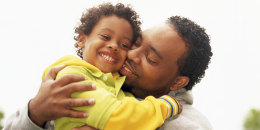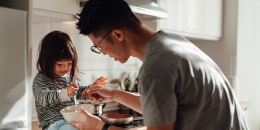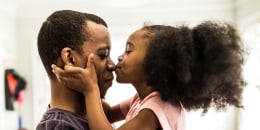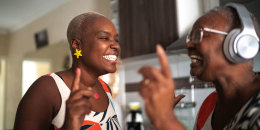Halloween is nearly here!
If you're like most people, when you think of Halloween, you likely associate the spooky holiday with witches, jack-o'-lanterns, ghosts, and trick-or-treating.
Chances are pretty good that Halloween also comes to mind when you see the colors black and orange. There's good reason for that. Much like red and green have evolved to signify Christmas, orange and black have become irrevocably tied to Halloween.
In fact, come October, it's next to impossible to go anywhere without seeing the colors everywhere you look. Emblazoned on everything from door decorations and pumpkins to ghoulish costumes and candy corn, it's a given that they represent the scary season.
And, it's not just those two colors either. In recent years, green and purple have also risen in popularity, adding to the mix of colors that are linked to October 31.
So, what's the meaning behind these Halloween colors? Why are they such an integral part of the holiday and how did they become related to Halloween in the first place?
To answer these questions and reveal other interesting Halloween facts, TODAY talked to the experts to find out all the details on these festive hues and here's what you need to know.
Halloween colors and their meaning
Orange and black
While it might seem that black and orange have been around forever as the “official” colors of Halloween, that’s not the case, according to Lisa Morton, author of “Trick or Treat: A History of Halloween.”
“In the first few years of the 20th century, there were party guides being published that called yellow and brown Halloween’s colors, thanks to the holiday’s association with the fall harvest,” Morton tells TODAY.com, adding that yellow was for corn or maize and brown was for hay and dried husks.
But make no mistake: Orange is in honor of the jack-o’-lantern, which made its way into Halloween culture around 1910. According to Morton, it became “undisputed king of Halloween” because of the jack-o’-lantern’s prominence on postcards and in advertising.
As for black? “Black does indeed likely come from black cats, although bats contributed to that as well,” Morton says.
Purple and green
Purple and green have crept into the Halloween palette over later decades. Morton believes the introduction of green may have been inspired by the emerald complexions of witches in film — notably, Margaret Hamilton’s turn as the Wicked Witch of the West in the 1939 film “The Wizard of Oz.”
“Before that, witches were typically shown with just human skin tones and dressed in red,” explains Morten.
Color expert Kate Smith wrote about the significance of purple on her website: “Purple has long been associated with wealth and royalty, as purple dye was precious and expensive. If green is the color of spring, then purple conjures up autumn, fading light, and shorter days.”
Smith also noted that the rich color is “associated with an escape from reality and magical images.” Sounds like Halloween and all its fantastic cosplay, for sure!
According to Amber Dunford, style director at Bed Bath & Beyond, purple evokes mystery and spirituality, which complements our modern interpretation of Halloween. Green is at the opposite end of the color wheel, making it a nice contrast to purple.
“These cooler color additions balance out the warmth of the orange, harmonizing the two color temperatures nicely,” Dunford tells TODAY.com. “The addition of green could be a nod to the external world, as we transition into fall hues around this time and the last of the summer greenery might be found lingering in some landscapes.”
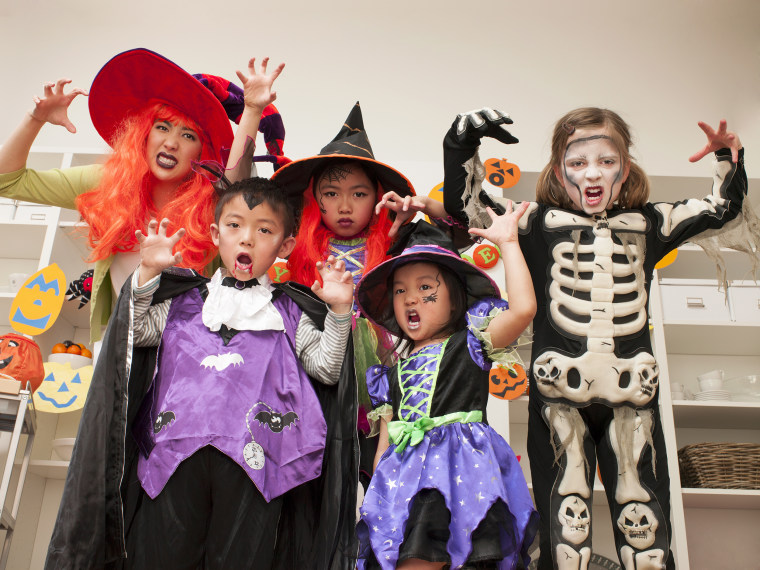
The psychology of color
“Color is the first thing we assess when viewing an object, making it one of the most powerful and memorable design aspects from a psychological perspective,” Dunford says.
People often react to color before they even respond to an object’s shape, texture or scale. “This tendency makes color a very powerful tool in marketing and one that becomes difficult to look past once it becomes ingrained in our psyche,” she adds.
Whether you prefer the classic Halloween colors or enjoy the expanded palette that includes green or purple, one thing’s for sure: When you see these colors, you’ll think of Halloween.


